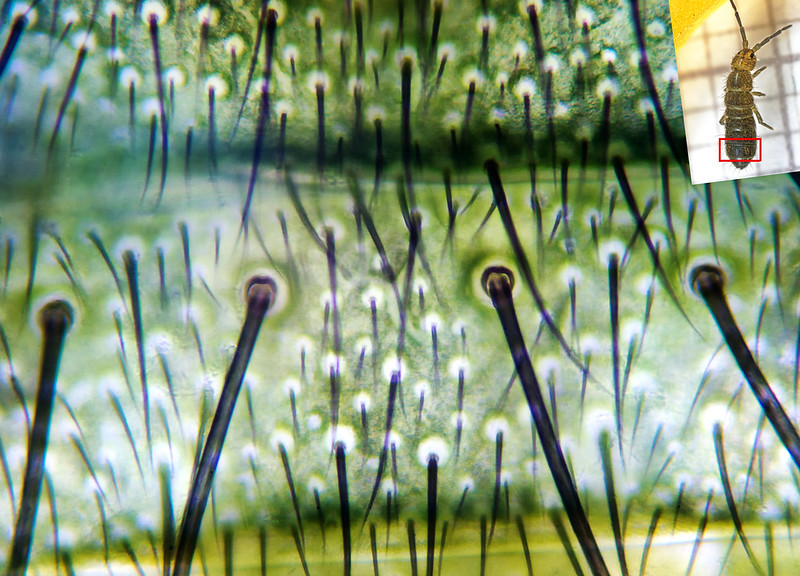
Setae are commonly classified in 3 classes: microsetae, mesosetae and macrosetae. This is a relative concept, mesosetae of one species may be as large as macrosetae of another species and vice versa. With a bit of imagination you can see that the base of the setal shaft has the shape of the 'head' of a bone. The setal shaft can only move forward or backward in the socket not sideways, so setae can only sense movement in one plane (backward-forward plane, "mechanoreceptive sensilla"). In contrast, bothriotricha/Trichobothria can move in all directions (like a joystick of a game controller) and thus can sense the movement in all directions. Unfortunately these hairs are easily lost, but the sockets in which they are set remain and thus can be determined even in the baldest of springtails:

No comments:
Post a Comment
Comments welcome, I will respond as soon as I can.
Note: only a member of this blog may post a comment.